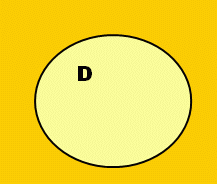[PL04] Quantifiers 2
Module: Predicate logic
- PL00. Introduction
- PL01. Singular terms
- PL02. Variables and predicates
- PL03. Quantifiers 1
- PL04. Quantifiers 2
- PL05. Well-formed formula
- PL06. Interpretation
- PL07. Domain
- PL08. Validity
- PL09. Other valid sequents
- PL10. Derivations 1
- PL11. Derivation rules
- PL12. Derivations 2
- PL13. Soundness and completeness
Quote of the page
I don’t know what I may seem to the world, but as to myself, I seem only to have been like a boy playing on the sea-shore and diverting myself in now and then finding a smoother pebble or a prettier shell than ordinary, whilst the great ocean of truth lay all undiscovered before me.
- Isaac Newton
Help us promote
critical thinking!
Popular pages
- What is critical thinking?
- What is logic?
- Hardest logic puzzle ever
- Free miniguide
- What is an argument?
- Knights and knaves puzzles
- Logic puzzles
- What is a good argument?
- Improving critical thinking
- Analogical arguments
Here are more examples. Make sure that you understand why the wffs are translated the way they are.
- ∀y~Dy: Everything is not D (i.e. Nothing is D.)
- ~∀yDy: Not everything is D
The second wff above actually means "It is not the case that EVERYTHING IS D." So it says that not everything is D. This is of course the same as saying that something is not D. If you are not sure why that is the case, look at the following diagram :

Suppose the yellow region represents everything that is D. The area outside the yellow region represents things that are not D. To say that not everything is D is to say that something exists in the class represented by the region outside the D circle. So this is the same as saying that something is not D.
- ~∀y~Dy: It is not the case that everything is not D (In other words, something is D!)
- ∃yDy: Something is D
- ∃y~Dy: Something is not D
- ~∃yDy: It is not the case that something is D (So everything is not D)
- ~∃y~Dy: It is not the case that something is not D (So everything is D)
As you can see, some of these wffs are equivalent to each other :
- ∀yDy ≡ ~∃y~Dy
- ~∀yDy ≡ ∃y~Dy
- ∀y~Dy ≡ ~∃yDy
- ~∀y~Dy ≡ ∃yDy
If you are not sure why, use the diagram above to help you. What the table of equivalence tells us is that the existential quantifier can be defined in terms of the universal quantifier, and vice versa. In general, we can assume these quantifer exchange rules :
(QE1) Whenever a wff in PL contains "∀x", replacing it with "~∃x~" will produce a logically equivalent wff.
(QE2) Whenever a wff in PL contains "∃x", replacing it with "~∀x~" will produce a logically equivalent wff.
Translate these wffs in PL into English. "Bz" means z is a bird and "Fz" means z can fly.
- ∀zBz
- ~∀z~Bz
- ~∃zFz
- ∃z~Fz
- ∀z~~Bz
Use the quantifier exchange rules to rewrite each of above wffs into a different but logically equivalent wff.